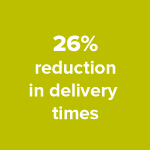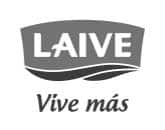Case Study
NAJRI

The business group with over 70 years in the Dominican Republic market increased effective deliveries by over 97% thanks to Unigis TMS.



Case Study
TRAIL STORE

Trail Store, a Chilean distributor of sports products, has increased productivity in its picking process by more than 45% after implementing Invas WMS.



Case Study
SIGNIA

Important logistics operator in Peru, with over 30 years of experience and more than 1,000 employees, managed to reduce dispatch errors by 90% with Infor’s WMS.



What is your challenge?
Supply Chain Execution
Supply Chain Planning
Supply Chain Analytics
Enterprise Asset Management
Supply Chain Artificial Intelligence
Workflow Solutions (VOZ)
We are experts in digital transformation
We have 30 years of experience implementing cutting-edge technology for supply chains in Latin America and the Caribbean. We have presence in more than 15 countries and 5 corporate headquarters in Colombia, Chile, Venezuela, USA and Panama.
Thanks to our team of consultants, experts in logistics, technology and the largest in Latin America, we have successfully implemented more than 220 projects and more than 80 clients use our solutions.
3PL
FOOD AND BEVERAGES
TECHNOLOGY
AUTOPARTS AND AUTOMOTIVE

CONSTRUCTION AND HOME
MASS CONSUMPTION
PHARMACEUTICAL AND PERSONAL CARE
TEXTILE

3PL - OPERADORES LOGÍSTICOS

ALIMENTOS Y BEBIDAS

ALTA TECNOLOGÍA Y ELECTRÓNICA

AUTOPARTES Y AUTOMOTRIZ

CONSTRUCCIÓN Y HOGAR

CONSUMO MASIVO

FARMA Y CUIDADO PERSONAL

TEXTIL
Some companies who trust in us












23 January, 2024
Fuel savings of 7% and a 15% reduction in kilometers traveled
Sandy Tejada, Logistics Manager and project leader at Najri, also highlighted improvements in data collection, organized through dashboards configured by Cerca Technology’s team. From there, he can monitor KPIs and make decisions based on real-time execution information.
19 february, 2024
Invas WMS: A Technological Tool Driving Business Growth in Chile
«We are very grateful to the consultant because from day one, he has been dedicated to our project, which was essential for its success and meeting all milestones. We were looking for a more dynamic tool, not just a module that limited us in some processes, and Invas WMS definitely met those expectations,» Mario Garcia – Trail Store.
19 march, 2024
Signia, a leading logistics operator in the pharmaceutical and personal care sector, increases automation and efficiency in its processes through a WMS.
«With Cerca Technology’s support, we achieved a successful project despite the challenges posed by the pandemic. Infor’s WMS has strengthened our logistics operation to provide better customer service and support the company’s growth.» Néstor Montoya, Operations Manager at Signia.
OUR SOLUTIONS, YOUR SUCCESS
If you have doubts, concerns, questions or just want to leave us your comments or contributions, fill out this form and we will respond as soon as possible. Remember your observations are extremely important to us.






